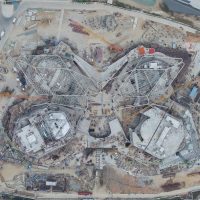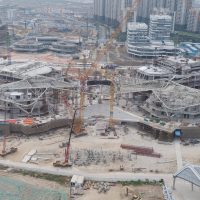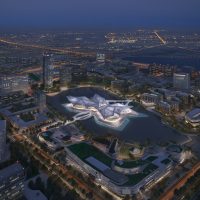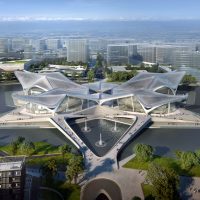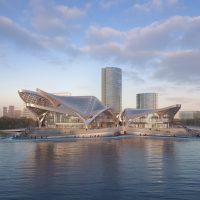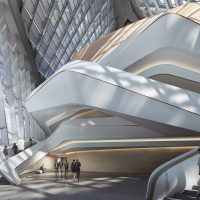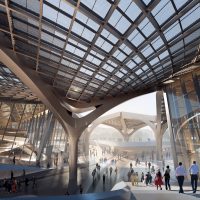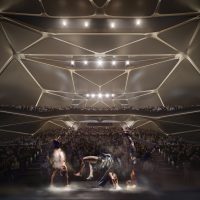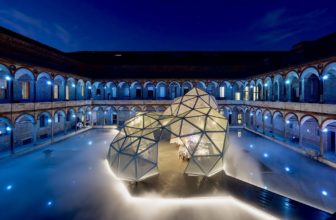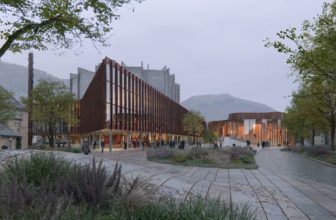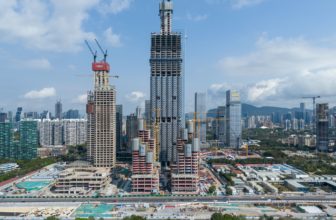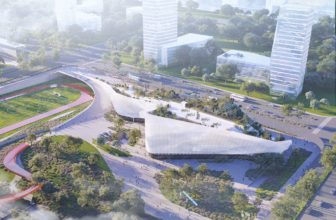Zaha Hadid Architects Reveals Images of Zhuhai Jinwan Civic Art Centre, in China. Construction works are progressing on the site of the Zhuhai Jinwan Civic Art Centre. The steel structure of its lattice roof canopy has now been installed over two of the center’s four cultural venues.
Designed as a hub of contemporary creativity within one of the world’s most dynamic regions, the Zhuhai Jinwan Civic Art Centre is located at the heart of Jinwan district’s Western Ecological New Town where the new Zhuhai Airport Intercity railway provides direct connections with Zhuhai’s city center, its airport and Hengqin district, as well as Guangzhou, Shenzhen, Macau, and Hong Kong via interchanges.
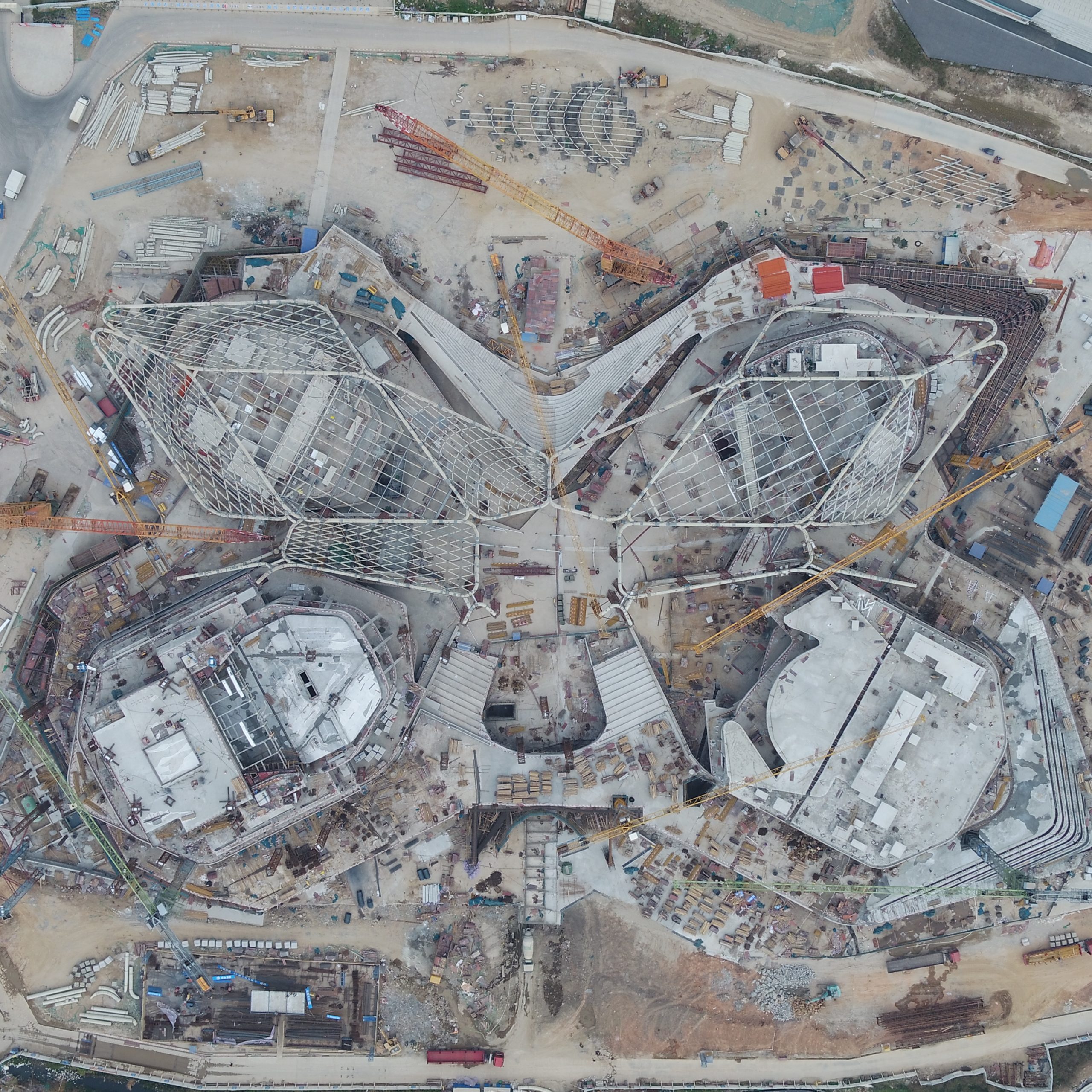
© Zaha Hadid Architects
Integrating four distinct cultural institutions for the city: a 1200-seat Grand Theatre; a 500-seat Multifunctional Hall, a Science Centre; and an Art Museum, each venue within the center incorporates unique characteristics to create the most engaging visitor experiences, yet all are united by a coherent formal and structural logic that spans 170 meters wide from east to west and 270 meters long from north to south.
Arranged symmetrically, the two larger and two smaller venues are connected by a central plaza that serves as a shared external foyer to each of the four cultural institutions. Glazed walls facing this courtyard enable visitors to determine the individuality and character of each venue. The Grand Theatre and Art Museum are very light in their materiality, while the Multifunctional Hall and Science Center have a much darker palette of materials.
Echoing the chevron patterns of migratory birds flying in formation over southern China, the latticed steel canopies over each venue are configured through repetition, symmetry, and scale variation; resulting in a composition of related elements that respond to the different functional requirements of each building. Every building module of the roof is self-supporting and self-stabilizing. The repetition of the modules optimizes pre-fabrication, pre-assembly, and the use of modular construction.
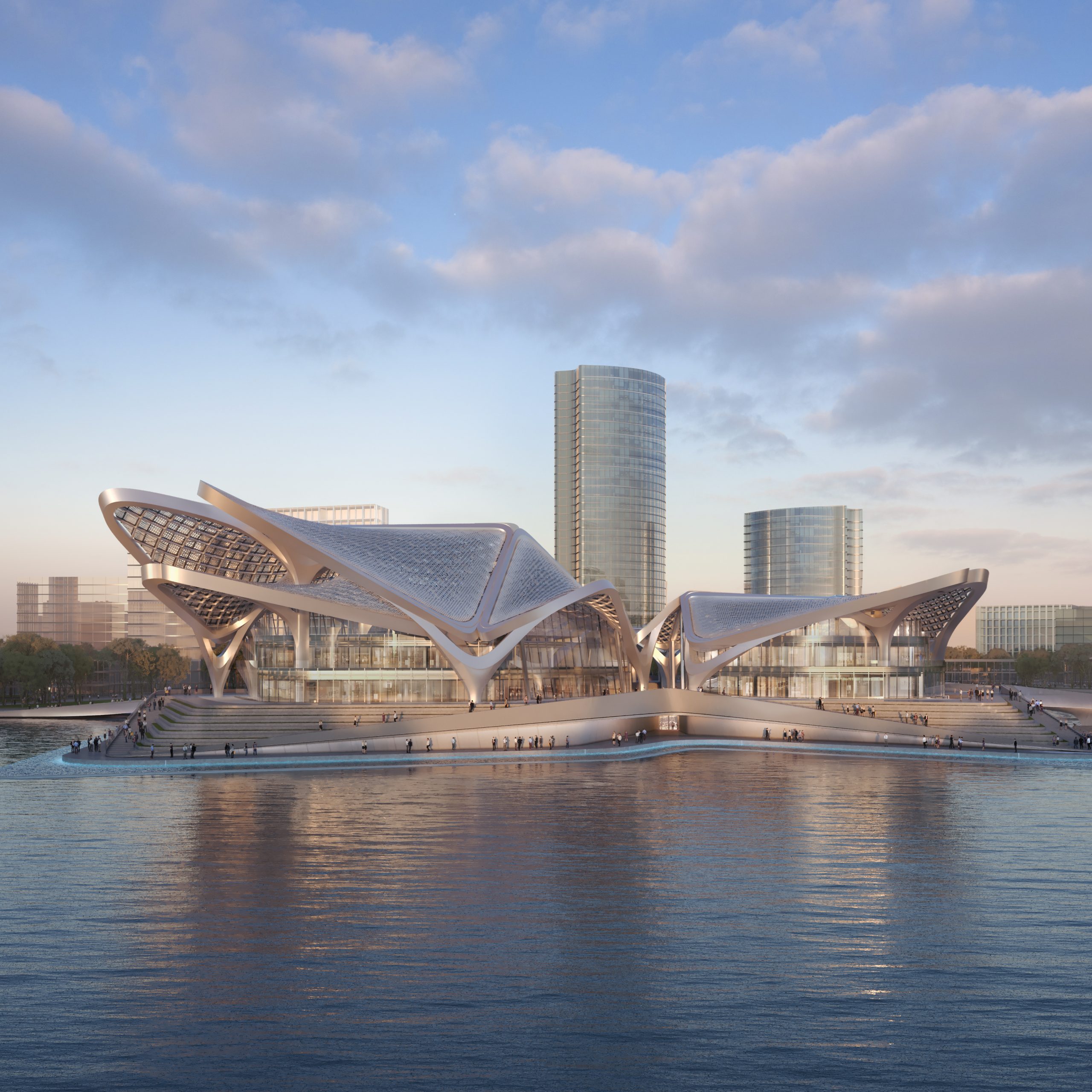
© Zaha Hadid Architects
The center’s distinctive roof structure unites the different venues under a network of reticulated shells soaring above the four buildings. Interconnecting bridges and voids define a vibrant public plaza with views to the center’s interiors as well as to the surrounding promenades with their cafés, restaurants, and educational facilities. The design optimizes natural light in all public areas and enhances connectivity; creating engaging civic spaces for Zhuhai’s residents to enjoy throughout the day and evening.
Ramps invite visitors to the rooftop piazza where footbridges and stairs connect through a central void to each venue; glazed façades provide transparency and welcome the community onto its public plazas beneath the sweeping roof structure. An external amphitheater on the west side of the center allows for outdoor performances and activities.
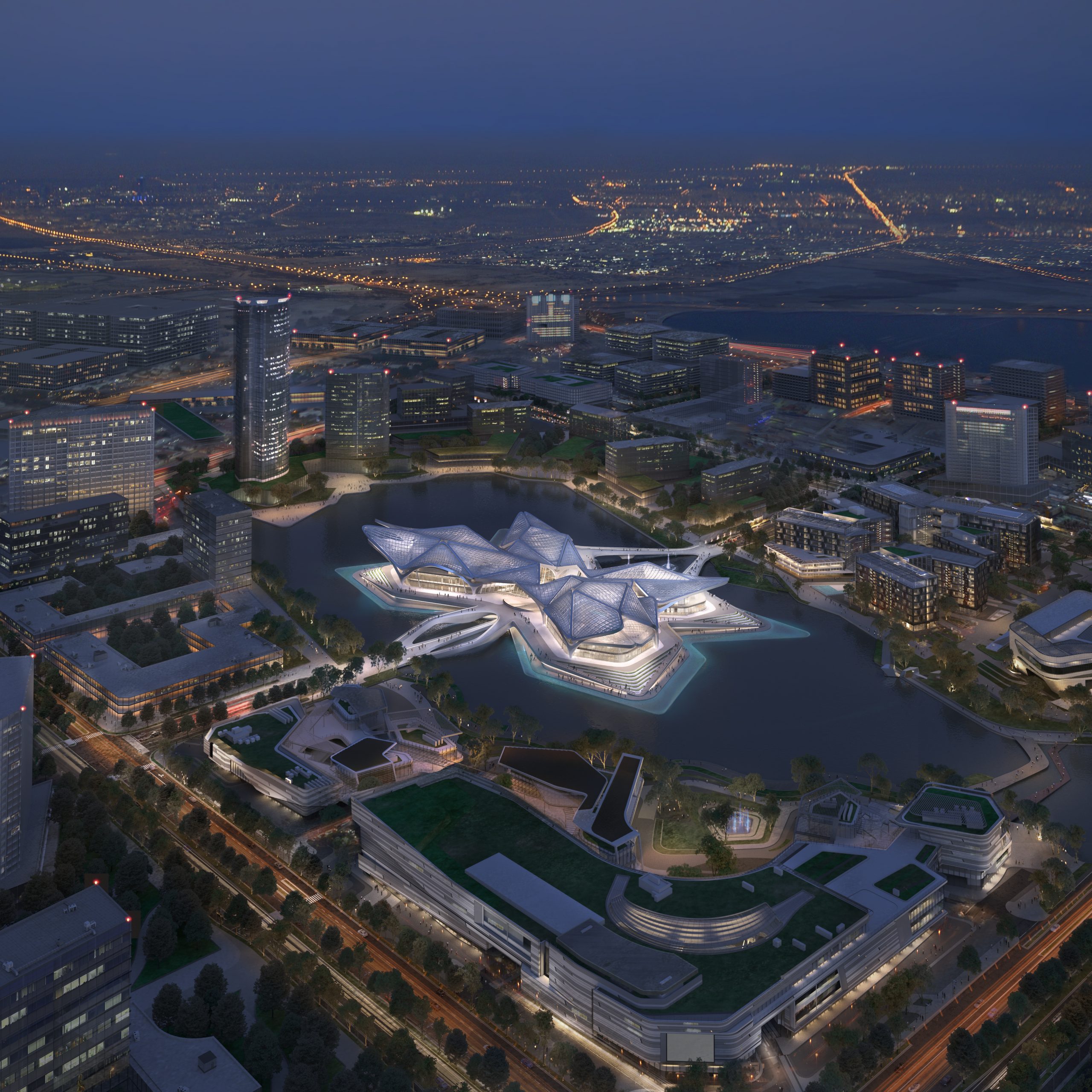
© Zaha Hadid Architects
The center’s landscaping and surrounding lake are designed as integral elements within Zhuhai’s ‘sponge city’ initiative that targets the natural permeation, storage, and re-use of at least 70% of the city’s rainwater; using aquatic flora and fauna to naturally filter contaminants. Humidity and soil-moisture sensors within the landscaping’s irrigation system will control and reduce water consumption.
Optimized for thermal performance, the double-insulated glazing
of the building’s envelope is protected by the latticed roof canopy which incorporates perforated aluminum panels to provide external solar shading. The perforations within the panels vary in size to allow differing degrees of sunlight within the center’s interior spaces in accordance with their programming requirements, solar gain, and orientation.
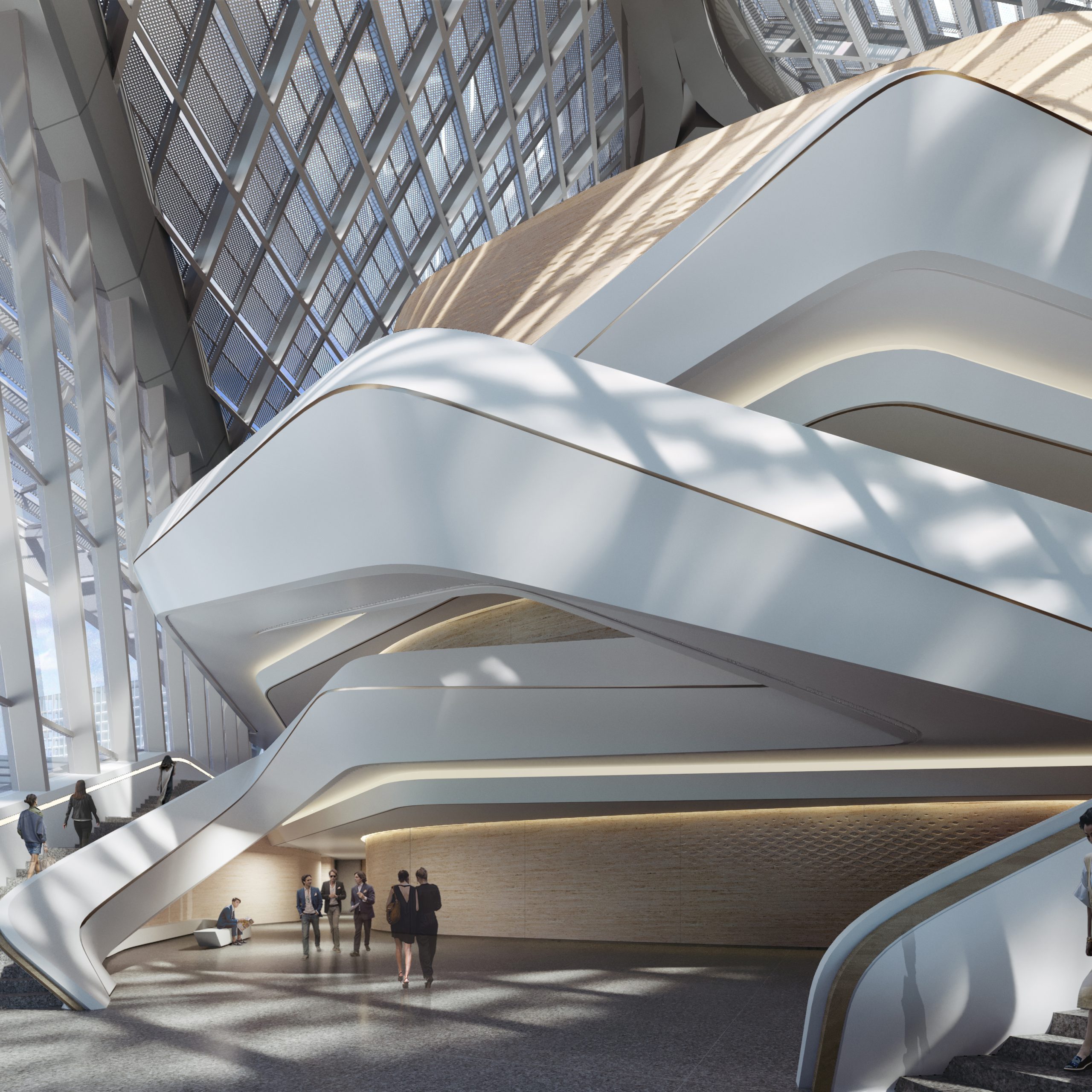
© Zaha Hadid Architects
Energy consumption and indoor air quality monitoring systems with intelligent control will automatically adjust the center’s interior environments for optimal comfort and energy reduction. Waste heat recovery will be used to meet the center’s hot water demand with water-saving appliances connected to the center’s water recycling system.
Designed to achieve two stars within China’s Green Building Evaluation Standard, the selection and procurement of the center’s structural components have prioritized recycled materials.
- © Zaha Hadid Architects
- © Zaha Hadid Architects
- © Zaha Hadid Architects
- © Zaha Hadid Architects
- © Zaha Hadid Architects
- © Zaha Hadid Architects
- © Zaha Hadid Architects
- © Zaha Hadid Architects


